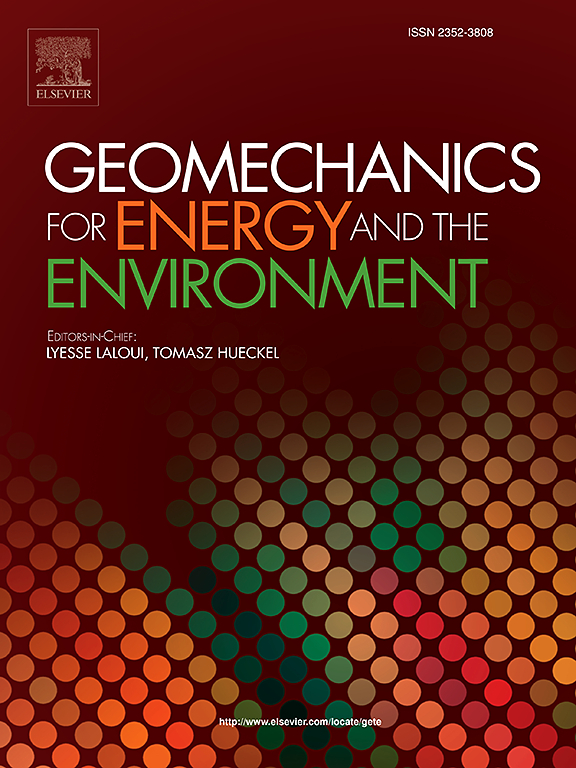Experimental investigation on biocementation materials in earthen heritage reinforcement
IF 3.7
2区 工程技术
Q3 ENERGY & FUELS
引用次数: 0
Abstract
The reinforcement and repair materials for earthen sites have high requirements for strength, resistance to deterioration, and aesthetic coordination. In this study, the enzyme-induced carbonate precipitation (EICP) and the microbially induced carbonate precipitation (MICP) techniques were used to reinforce the earthen site soil. The applicability of EICP and MICP for stabilizing earthen sites soil was investigated through static contact angle tests, disintegration tests and colorimetry tests. In addition, the improvement of mechanical properties of biotreated earthen sites soil was examined by unconfined compression strength tests. The tests results show that MICP and EICP techniques could improve the mechanical characteristics and water-stability properties of the earthen sites soil. With the increase in cementing solution concentration, the effectiveness of EICP was enhanced, while the water-stability and hydrophobicity of MICP-treated soils increased first and then decreased due to the influences of organic matter and soluble salts. EICP and MICP techniques showed different performance in reinforcing effects on calcium carbonate content, shear wave velocity, unconfined compressive peak strength, total disintegration time, and static contact angle. This study is expected to contribute valuable insights to the conservation of earthen heritage site using bio-based methods.
生物胶结材料在土质遗产加固中的试验研究
土建场地的加固和修复材料对强度、抗劣性和审美协调性有很高的要求。本研究采用酶诱导碳酸盐沉淀(EICP)和微生物诱导碳酸盐沉淀(MICP)技术对场地土进行加固。通过静态接触角试验、崩解试验和比色试验,考察了EICP和MICP在固土场土中的适用性。此外,通过无侧限抗压强度试验考察了生物处理后土的力学性能改善情况。试验结果表明,MICP和EICP技术可以改善场地土的力学特性和水稳定性。随着胶结液浓度的增加,EICP的有效性增强,而受有机质和可溶性盐的影响,micp处理土壤的水稳定性和疏水性先增加后降低。EICP和MICP技术对碳酸钙含量、剪切波速、无侧限抗压峰值强度、总崩解时间和静态接触角的补强效果不同。该研究有望为利用生物方法保护土遗址提供有价值的见解。
本文章由计算机程序翻译,如有差异,请以英文原文为准。
求助全文
约1分钟内获得全文
求助全文
来源期刊

Geomechanics for Energy and the Environment
Earth and Planetary Sciences-Geotechnical Engineering and Engineering Geology
CiteScore
5.90
自引率
11.80%
发文量
87
期刊介绍:
The aim of the Journal is to publish research results of the highest quality and of lasting importance on the subject of geomechanics, with the focus on applications to geological energy production and storage, and the interaction of soils and rocks with the natural and engineered environment. Special attention is given to concepts and developments of new energy geotechnologies that comprise intrinsic mechanisms protecting the environment against a potential engineering induced damage, hence warranting sustainable usage of energy resources.
The scope of the journal is broad, including fundamental concepts in geomechanics and mechanics of porous media, the experiments and analysis of novel phenomena and applications. Of special interest are issues resulting from coupling of particular physics, chemistry and biology of external forcings, as well as of pore fluid/gas and minerals to the solid mechanics of the medium skeleton and pore fluid mechanics. The multi-scale and inter-scale interactions between the phenomena and the behavior representations are also of particular interest. Contributions to general theoretical approach to these issues, but of potential reference to geomechanics in its context of energy and the environment are also most welcome.
 求助内容:
求助内容: 应助结果提醒方式:
应助结果提醒方式:


